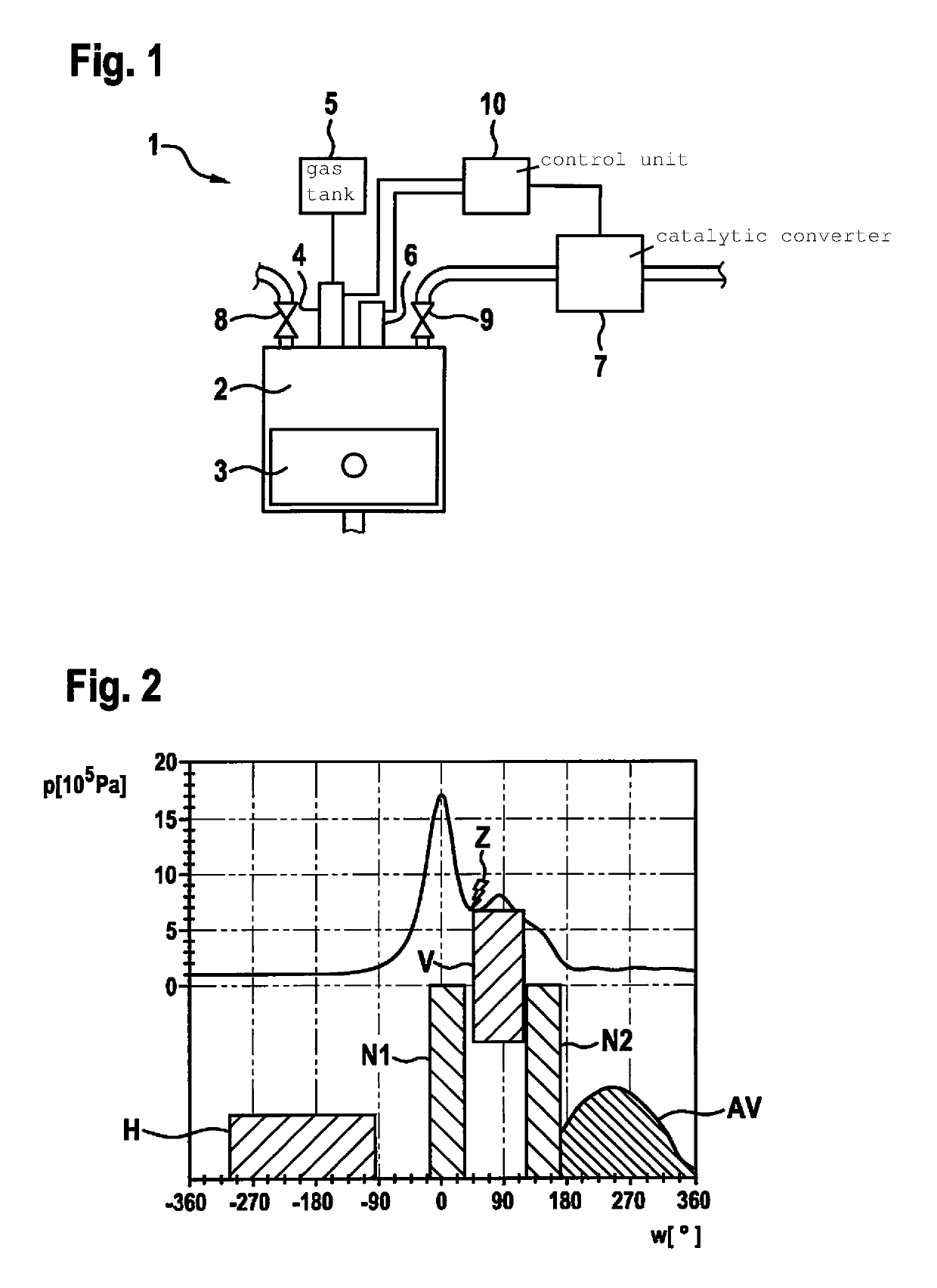Method and device for controlling an internal combustion engine
a technology of internal combustion engine and control device, which is applied in the direction of electric control, machines/engines, mechanical equipment, etc., can solve the problems of increasing the complexity affecting the efficiency of exhaust gas treatment, and unable to ensure the treatment of exhaust gas in the case, so as to increase the enthalpy of exhaust gas
- Summary
- Abstract
- Description
- Claims
- Application Information
AI Technical Summary
Benefits of technology
Problems solved by technology
Method used
Image
Examples
Embodiment Construction
[0016]Below, an example method according to the present invention for the injection of gaseous fuel directly into a combustion chamber 2 of an internal combustion engine 1 in order to heat a catalytic converter 7 is described in detail with reference to FIGS. 1 and 2.
[0017]The heating of catalytic converter 7 is necessary when it has a temperature below a predefined threshold temperature. In comparison with liquid fuels, a required working temperature of the catalytic converter is approximately 100 K higher for gaseous fuels and lies at approximately 420° C.
[0018]As can be gathered from FIG. 1, internal combustion engine 1 includes a piston 3 disposed in combustion chamber 2, an injector 4, and an ignition device 6 such as a spark plug.
[0019]Injector 4 is situated directly on combustion chamber 2 in order to inject gaseous fuel directly into the combustion chamber. Injector 4 is connected to a gas tank 5.
[0020]Catalytic converter 7 is provided in the exhaust tract. In the convention...
PUM
 Login to View More
Login to View More Abstract
Description
Claims
Application Information
 Login to View More
Login to View More - R&D
- Intellectual Property
- Life Sciences
- Materials
- Tech Scout
- Unparalleled Data Quality
- Higher Quality Content
- 60% Fewer Hallucinations
Browse by: Latest US Patents, China's latest patents, Technical Efficacy Thesaurus, Application Domain, Technology Topic, Popular Technical Reports.
© 2025 PatSnap. All rights reserved.Legal|Privacy policy|Modern Slavery Act Transparency Statement|Sitemap|About US| Contact US: help@patsnap.com

